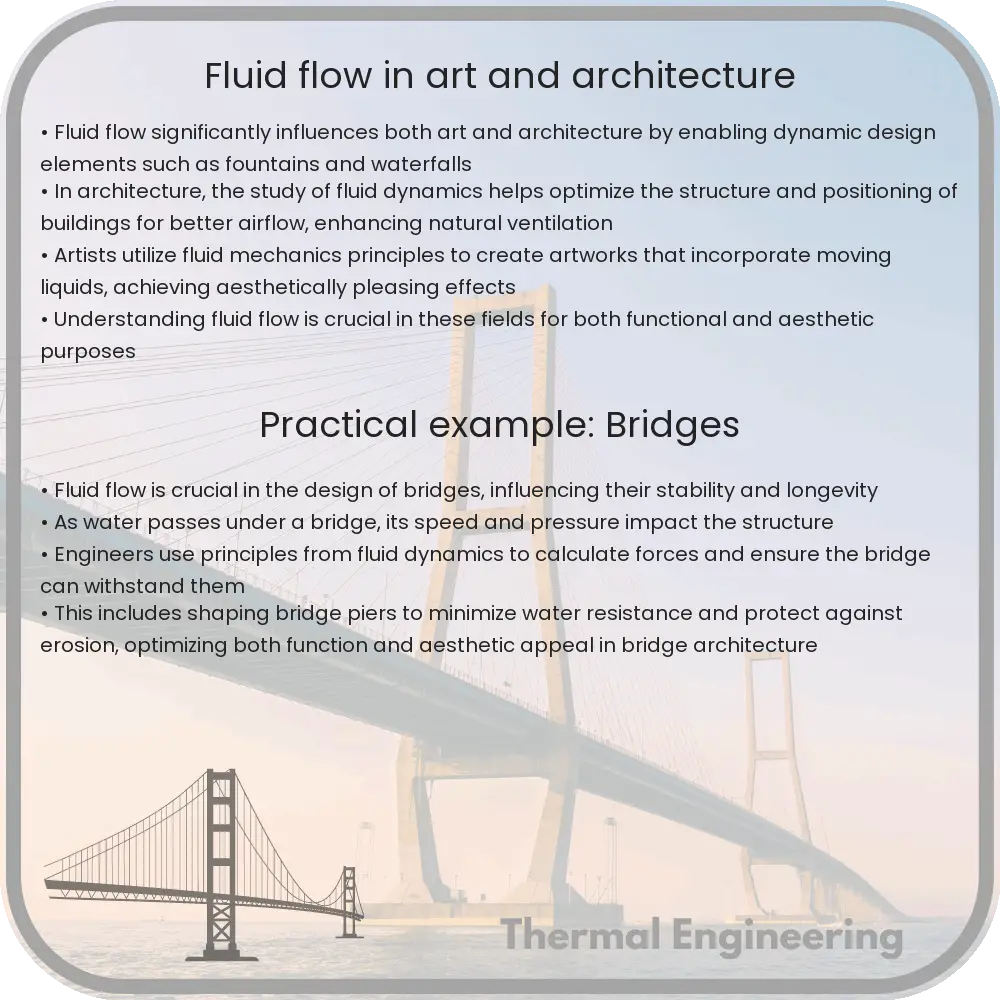Unveiling the role of fluid dynamics in shaping artistic and architectural designs by examining fluid behaviors in motion.

Exploring Fluid Flow in Art and Architecture
Fluid flow, often studied under the discipline of fluid dynamics in engineering, plays a pivotal role in both art and architecture. This fascinating area explores how liquids and gases behave, which is crucial not just in engineering and physics, but also in the creation and conceptualization of artistic and architectural works. Here we’ll delve into how the principles of fluid flow influence and inspire designs in both fields.
Fluid Dynamics Basics
At its core, fluid dynamics is concerned with the behavior of fluids (liquids and gases) in motion. The basic equations governing fluid flow are the Navier-Stokes equations, which describe how the velocity field of fluids evolves. These equations take into consideration velocity, pressure, density, and viscosity of the flowing fluid. Although these can get mathematically complex, a simplified understanding can offer artists and architects a basis to incorporate fluid-like elements into their designs.
Fluid Flow in Art
In the realm of art, the visual representation of flowing water, swirling gases, and other fluid forms has always been a subject of fascination. Artists often utilize fluid dynamics concepts to create works that embody or represent the motion and chaos found in nature:
- Painting: Techniques that involve pouring or dripping paint rely on gravity and the fluid properties of paint. Jackson Pollock famously used fluid dynamics knowingly or unknowingly in his drip paintings, where the viscosity of the paint along with the force of gravity and the angle of his canvas influenced how the paint flowed and spread.
- Sculpture: Artists creating installations or sculptures sometimes need to understand fluid flow to create pieces that interact with water or air. The use of fluid dynamics can be seen in fountains or wind-driven sculptures, where the flow rate and pressure dictate the movement of water or air through the sculpture.
Fluid Flow in Architecture
Architecture often utilizes principles of fluid dynamics to design structures that can withstand the dynamic forces of wind and water, as well as to integrate water features aesthetically:
- Building Aerodynamics: The study of how air moves around buildings is crucial in skyscraper design. For instance, the shape of the building can significantly affect the wind load. Architects often use wind tunnel testing to understand how their designs will perform in real-world conditions.
- Water Features: Modern architecture includes dynamic water features that require an intricate understanding of fluid flow. Calculations related to pressure, flow rate, and turbulence are essential for designing fountains or waterfalls that are not only beautiful but also efficient.
Creative Integration of Fluid Dynamics
Both artists and architects have continually drawn inspiration from the natural flow of fluids. This integration often results in works that are not only visually striking but also reflect the complex behaviors of fluid movement. Understanding and exploring fluid dynamics allows creators to simulate natural processes, creating designs that resonate with the fluidity and rhythm seen in nature.
In conclusion, the blending of fluid dynamics in art and architecture showcases a beautiful intersection of science and creativity. As we advance technologically, the potential for new and innovative applications of fluid flow in these fields continues to grow, promising even more spectacular integrations of fluid dynamics in the designs of the future.